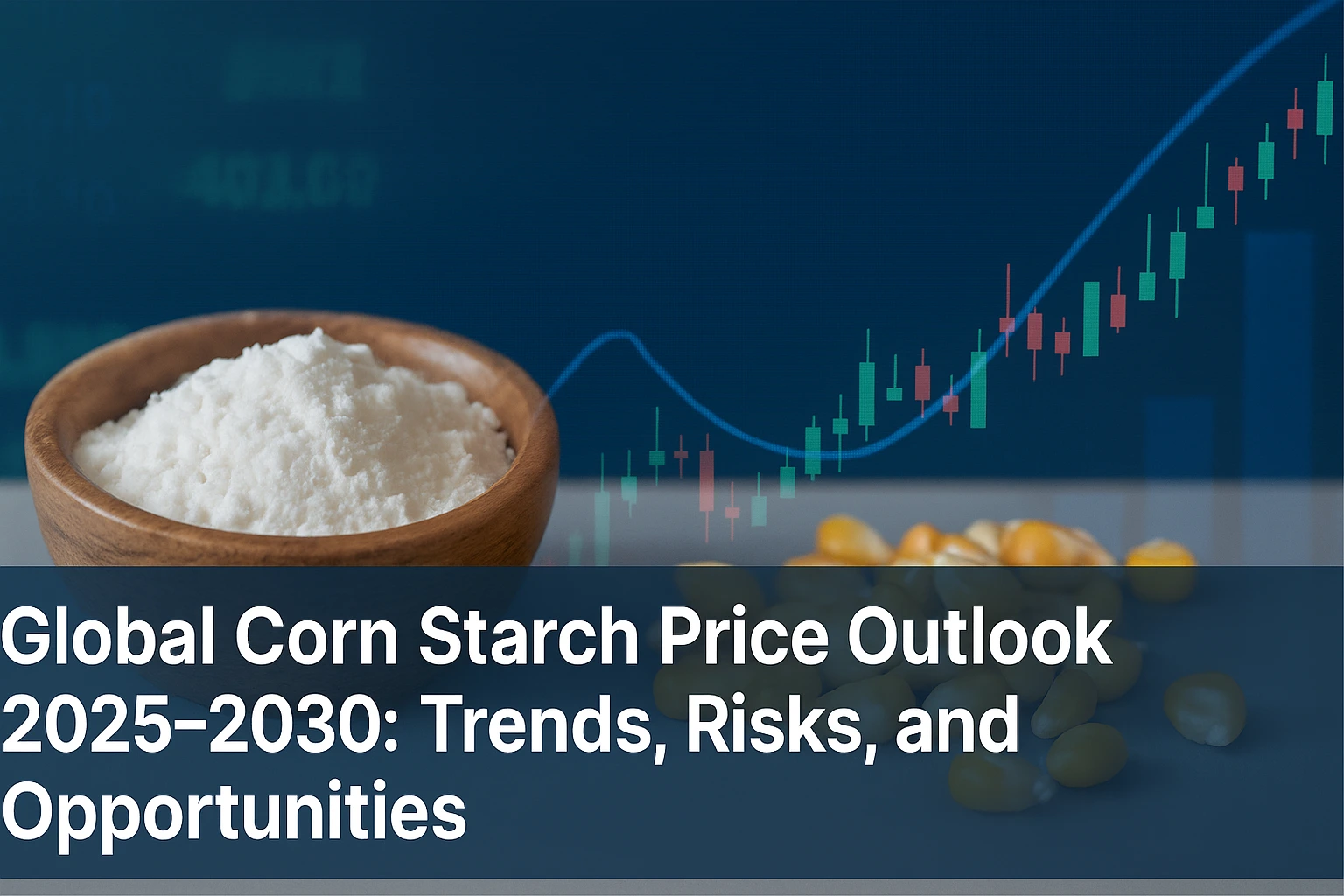1. Introduction: The Global Pulse of Corn Starch
Corn starch is a vital ingredient powering food, beverages, paper, textiles, pharmaceuticals, and industrial products across the globe. The market, valued at $24–28.8 billion in 2025, is forecast to reach $33–49 billion by 2030–2033, with long-term CAGR estimates around 6–8%. Factors fueling growth include the expanding processed food sector, surging demand from Asia-Pacific, and increasing innovation in bio-based and clean-label products.
2. Market Trends Shaping Corn Starch Prices
Recent data shows that corn starch prices have trended downward since late 2024 due to oversupply of corn, slower industrial demand, and smooth logistics. Producer Price Indices (PPIs) and spot prices in major markets—such as the U.S., Germany, and China—reflect this, with U.S. prices at $510/MT and Germany stabilizing at $650/MT by Q4 2024. However, forecasts anticipate mild upward correction between 2026–2030 as food, pharma, and bio-based packaging demand rebounds.
Market drivers:
-
Food and beverage sector expansion, especially ready-to-eat, dairy, and snacks
-
Pharmaceutical and cosmetics adoption for thickening, binding, and stabilizing
-
New uses in bioplastics and adhesives in response to sustainability mandates
3. Pricing Risks, Volatility Drivers, and Buyer Challenges
-
Raw Material Volatility: Fluctuations in corn yields, climate impacts, and global corn demand directly shape starch costs; weather events, like droughts in the Midwest U.S. or China, pose major risk.
-
Energy and Logistics: Geopolitical tensions, rising energy prices, and supply chain disruptions can spike input costs and limit market access, particularly for exporters.
-
Regulation & Policy: Government subsidies, biofuel mandates, and food safety regulations introduce price volatility or regional trade barriers. Climate, sustainability, and recycling rules influence pricing/procurement strategies.
Long-term price stability depends on strong supplier partnerships, diversified sourcing, and market intelligence platforms for risk management.
4. Regional Market Outlook and Supplier Dynamics
-
Asia-Pacific leads growth by volume and value, with China, India, and Southeast Asia outpacing other regions. The U.S. and EU remain the largest, most mature, and competitive markets.
-
North America: Prices reflect abundant local supply, but are sensitive to weather and fuel costs.
-
Europe: High-value, specialty starches and pricing are driven by sustainability and regulatory standards.
-
Emerging Markets: Latin America, MENA, and Africa are increasing imports and local production to support food security and industrialization.
Top suppliers in 2025–2030 include Cargill, ADM, Ingredion, Tate & Lyle, Tereos, Südzucker, and Global Bio-Chem—leaders in technological innovation, reliable supply, and global distribution.
5. Strategic Opportunities and Future Forecasts
-
Procurement & Supply Chain: Buyers lock contracts during price dips and diversify corn sourcing to manage volatility.
-
Sustainability & Innovation: Demand for non-GMO, organic, and clean-label starches grows; market share shifts to suppliers advancing upcycled, low-carbon production.
-
Digitalization: Data-driven procurement tools help buyers optimize costs, forecast risk, and manage quality across diverse supplier bases.
Forecasts expect prices to stabilize with moderate growth and increased transparency, supporting long-term planning for food, feed, and bioplastic manufacturers.
6. Conclusion: Policy, Innovation, and Sourcing Strategy
Corn starch’s price outlook for 2025–2030 reflects both opportunity and risk. As demand rises and producers innovate, buyers must manage supply chain unpredictability with robust contracts, diversified sourcing, and market intelligence tools. Success lies in harnessing data, forging supplier alliances, and investing in sustainable solutions.

Leave a Comment